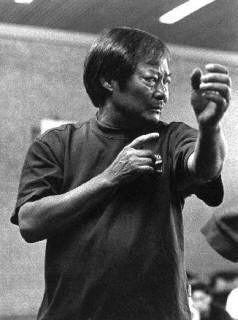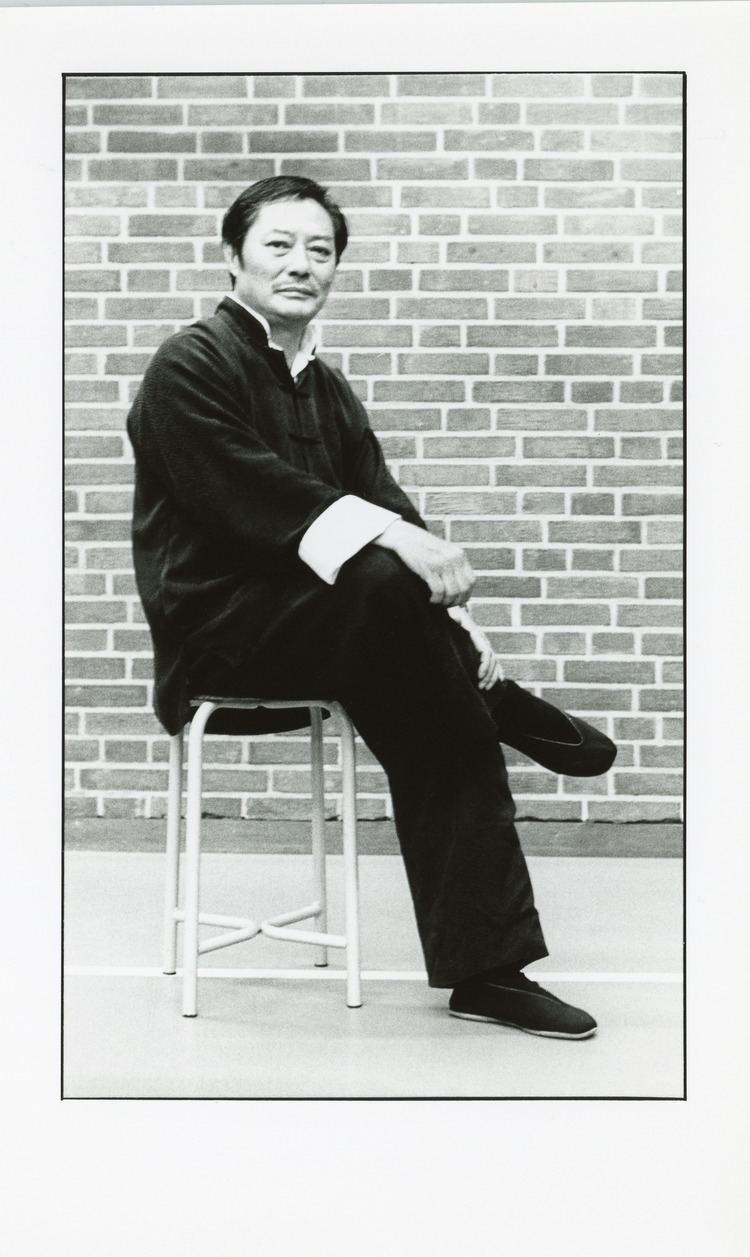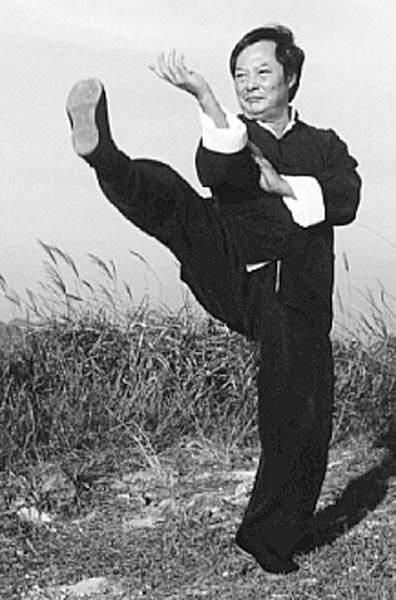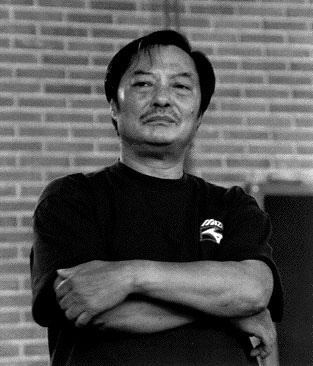Style Wing Chun Teacher Yip Man Role Martial Artist | Name Wong Leung Rank Grandmaster | |
 | ||
Born 8 May 1935
Hong Kong ( 1935-05-08 ) Died January 28, 1997, Hong Kong Movies Wing Chun: The Science of In-Fighting Similar People Yip Man, Bruce Lee, Leung Ting | ||
Notable students Bruce Lee, Wan Kam Leung | ||
Wong shun leung ving tsun martial arts headquarters hong kong
Wong Shun Leung (Chinese: 黃淳樑; pinyin: Huang Chun Liáng; Jyutping: Wong4 Seon4 Loeng4; 8 May 1935 – 28 January 1997) was a Chinese martial artist from Hong Kong who studied Wing Chun kung fu under Ip Man (葉問) and was credited with training Bruce Lee. In interviews, Wong claimed to have won at least 60, and perhaps over 100, street fights against martial artists of various styles, though these numbers cannot be independently confirmed. Due to his reputation, his students and admirers referred to him as 'Gong Sau Wong' (講手王 or 'King of Talking Hands'). Wong recorded one instructional film entitled Wing Chun: The science of in-fighting.
Contents
- Wong shun leung ving tsun martial arts headquarters hong kong
- Wong shun leung the king of talking hands
- Early martial arts training
- First encounter with Ip Man
- Behind the Scene Teacher of Bruce Lee
- Official Recognition by China in year 1996 as Science of Ving Tsun Kung Fu
- Beimo competition
- Retirement from beimo competition
- Other competitions
- Ip Man Kwoons new Jeung Mun Yan
- Enter the Dragon
- Game of Death
- Later film work
- List of Students of Wong Shun Leung
- Legacy
- References

Wong shun leung the king of talking hands
Early martial arts training

Wong reportedly trained in several martial art styles in his youth, primarily in Tai Chi and either boxing or kickboxing. He abandoned boxing because of two incidents: one with his boxing coach and one with Ip Man. The first incident apparently occurred because Wong accidentally struck his boxing coach during sparring. The angry coach attacked in earnest, only to be eventually knocked out by Wong; the incident caused Wong to leave boxing. In another account, however, Wong said he had defeated his boxing coach with wing chun techniques: "I was sparring with my instructor and I hit him very hard, he got real mad and came at me very hard. I fought back with wing chun and he ended up bleeding. Boxing was over for me!"
First encounter with Ip Man

The second incident came about from Wong's fascination with the stories of legendary wing chun figures, such as Chan Wah-shun (陳華順) and Leung Jan (梁贊). This interest led Wong to look for a wing chun teacher. Friends of his older brother took him to meet Ip Man. According to one version of events, after defeating at least two of Yip's students, Wong had a match with Yip himself and was defeated easily. Another version is that after Wong faced Lo Man Kam, later Yip Po Ching dealt with Wong. In any case, Wong joined the wing chun group and eventually came to assist Yip with teaching, with students including Bruce Lee.
Behind the Scene Teacher of Bruce Lee
Grandmaster Ip Man once spoke to Wong after Lee achieved superstardom “如果没有你的多方鼓励和指导,李小龙断无今日的成就” (Without your guidance and encouragement, Bruce Lee wouldn’t be having such achievement".
Bruce Lee once wrote in a letter to Wong, "Even though I am (technically) a student of Ip Man, in reality I learned my Kung-fu from you." Wong was believed to have carried the letter in his wallet. Perhaps the best-known letter from Lee to Wong is that of 11 January 1970, which has been translated into English as an appendix to an article by Wong.
In 1970 Bruce Lee wrote a letter in Chinese to Wong Shun-Leung :
Bruce Lee, 1970
Official Recognition by China in year 1996 as Science of Ving Tsun Kung Fu
In October 1996, National Sports Administration of China invited Wong Shun Leung (together with 12 students) to Beijing to teach and to promote Wong’s Ving Tsun to the Chinese peoples, the seminar turn out very successful with nearly 200 registered participants and among them were martial arts experts, enthusiast, police and army individuals. After the weeklong training with Wong and Wong’s students, both organizer and participants unanimously acknowledged that Wong’s Ving Tsun is not just an ordinary fighting skill but something deep, significant and highly effective, since then Wong’s fighting system became known as 咏春拳学 in Chinese, Ving Tsun Kuen Hok in Cantonese of Hong Kong and Science of Ving Tsun Kung Fu in English, today WSLVT (Wong Shun Leung Ving Tsun) is widespread in mainland China and worldwide.
Beimo competition
According to Wong and his students, he became active in beimo (比武): semi-organised bare-knuckle challenge fights in Hong Kong (sometimes known as 'kung fu elimination contests'). Supposedly there were no rules, protective equipment, or time limits. As Wong recalled in an interview, "When I competed, it was in secret. We went into a room, and the door was shut and there were no rules. The government did not allow them. They were illegal, but we didn't care. We fought until the other guy was knocked out." Beimo competitions were believed to be held anywhere that was found to be convenient. Some beimo competitions were held on the streets in Hong Kong.
According to Yuen Yim Keung, there where three (3) two (2) minute rounds with a one (1) minute rest in between. The ring was five (5) metres in diameter, which was drawn in chalk, and as a result if the opponent went out of the ring more than three (3) times he would be announced as the loser. There were also no attacks to the eyes, throat or groin, but everything else could be applied. Also if there was excessive blood loss, then the injured fighter would be announced as the loser.
In the early 1950s, compared to other kung fu styles, wing chun was hardly known. It was a style of kung fu practiced by a minority—mostly members of the Association of Restaurant Workers of Hong Kong. Different kung fu schools met secretly with each other for challenge matches. Wong was said to have faced opponents from many disciplines—"virtually every style of martial art in the colony." He defeated many opponents in beimo matches in Hong Kong between the ages of 17 and 32, and his reputation grew as he continued winning these matches. Some have attributed wing chun's fame in Hong Kong to Wong's beimo reputation.
Students from different schools sometimes visited each other's schools and issued challenge to their top students and instructors. If a student was able to beat the main teacher or master of a particular school, the school would close down. According to some of Yip's first-generation students, Wong "reputedly 'closed down' quite a number of schools in that way." Reportedly, Wong won most of these contests within a few punches. Wong's prowess in beimo helped him convince his secondary school classmate, Wu Chan Nam, to become his first student—Wu witnessed his win in a beimo match. In addition, he encouraged his junior fellow students and his own students to compete in beimo competitions and arranged matches for them. According to Yuen Yim Keung (袁炎強), Wong's student, Wong stopped arranging these matches because "his students were defeating not only other Kung Fu styles but also other students of Ving Tsun outside of the Wong Shun Leung family." Wong also reportedly had a beimo match with a much bigger Russian boxer called Giko. John Smith (a student of one of Wong's students), reports that Wong defeated Giko, and that Wong himself told Smith how he was able to achieve this victory.
Wong was believed to have had over 60, and perhaps over 100, beimo matches and never lost. This reputation earned him the name 'Gong Sau Wong' (i.e., 'King of Talking Hands'). Once asked if he was the best fighter in the world, he replied, "No, only the second best"; when then asked who was the best, he said, "I have not met him yet."
Retirement from beimo competition
In what was to be Wong's last beimo match, he unintentionally blinded his opponent's eye; he then decided to quit beimo fighting. Lee Hang Cheong (李恆昌), one of Wong's students, recalled that Wong had insulted his intended opponent (apparently a well-known kung fu instructor) to coerce him to fight, but regretted both instigating the fight and accidentally blinding the other man in one eye. There is a discrepancy between Lee's account and others about Wong's age when he retired from beimo competition. A few sources claim that Wong competed in beimo until the age of 32. Lee, however, said that Wong was around the age of 24.
Another view is that Wong's last beimo match was actually a different kind of incident. In beimo competition, according to Yuen Yim Keung, "There were also no attacks to the eyes, throat or groin, but everything else could be applied." Yuen also said that there were three two-minute rounds in a beimo match. In contrast, others have said that there were no rules and no time limits. Moreover, some question whether or not a referee was present. When Wu Chan Nam fought in a beimo match, there was a referee present—Wong Kiu. According to Life and Legend of Bruce Lee, there was always supposed to be a referee present at a beimo match, as Wong re-enacted the scene of a 1950s beimo match on a rooftop and played the role of the referee.
Other competitions
On 22 November 1957, the inaugural Taiwan–Hong Kong–Macau Open Chinese Kung Fu Competition (台港澳國術比賽) was held in Taiwan. Thirty-two competitors from Hong Kong and Macau formed a team and participated in this competition, but only two Hong Kong competitors scored a victory. Wong competed in his weight class and had a preliminary match with Wu Ming Jeet (吳明哲), a Taiwanese fighter known for his powerful kicks, but was knocked out and eliminated. A documentary film covering the competition was played in Hong Kong, with a first-day showing on 12 February 1958. In 1974, Unicorn Chan (小麒麟) recalled that it was in 1958 when Bruce Lee took him to watch a documentary film on kung fu competitions, and that Lee had watched it seven times before within the last four days.
Wong once defeated a fencing champion on television with his wing chun butterfly knives. Gary Lam recounted that "several years ago my Sifu, the late Wong Shun Leung, sparred with a champion western fencer on television. Wong easy beat the fencer, and when the fencer complained Wong had an unfair advantage with two swords, Wong offered him a second blade and beat him again."
Wan Kam Leung (溫鑑良) witnessed the fight Wong fought with Bruce Lee when Lee returned to Hong Kong from the United States. It took place at Lee's home in Kowloon Tong. Wong claimed that his hands were faster acting than Lee's, however Bruce retaliated by saying his kicks were much faster, thus provoking the friendly scuffle. Wan commented that Lee's kicks were fast and powerful whilst Wong's wing chun hand techniques were modified and practical. Wong and Lee only fought for a short period of time.
Ip Man Kwoon's new Jeung-Mun-Yan
1970’s Kungfu magazine 17th issue “Who succeed the Jeung-Mun-Yan of Wing Chun” (Chinese: 香港《當代武壇》第17期《誰繼承詠春掌門之位》 ) published in Hong Kong, on December 1972 after Grandmaster Ip Man died, students of Yip found themselves without a leader, Ip Chun, Leung Sheung, Lok Yiu, Chu Shong Tin, Jiu Wan, Wong Shun Leung, Tang Sang and Bruce Lee among the candidates to succeed Yip, after 6 months of debates, Ip Chun and students of Yip officially appointed Wong as the new Jeung-Mun-Yan (president) of Wing Chun (Chinese: 香港咏春体育会主席).
Enter the Dragon
Some sources claim that Wong choreographed some fight scenes in Enter the Dragon (龍爭虎鬥), saying that "... when shooting Enter the Dragon in Hong Kong, he [Bruce Lee] invited Wong to come on location to discuss the fight scenes" and that "Wong in fact had been invited to choreograph some of the fight scenes in Enter the Dragon." The documentary Dragon since 1973 consists of interviews with various Hong Kong personalities, mostly those who worked with Lee in his Golden Harvest days. None of the interviewees, including Bee Chan (陳會毅; one of Lee's most trusted assistants), Shek Kin (石堅), and Chaplin Chang (張欽鵬), mentioned that Wong had been invited to work as a fight scene choreographer for Enter the Dragon.
A photograph of Wong, Lee, and Raymond Chow (鄒文懐) on one of the sets of Enter the Dragon (the weapon room) implies that Wong was present during filming. Wong appears in the same clothing in that photograph as he wears in the footage of himself sparring with an extra on that particular set, and thus could have been from the time when Wong attended a screen test for Game of Death, as described below.
Game of Death
Wong received an invitation to appear in Game of Death (死亡遊戲), but declined. He was scheduled to attend a screen test on the set of Enter the Dragon after Bruce Lee had finished shooting the film and was working on dubbing. Lee returned to Hong Kong from his last trip to the United States of America in late May 1973. Thus, Wong would have attended the screen test sometime in June 1973. Wong recalled, "About two months before he (Bruce Lee) died he gave me a phone call ... After this he left Hong Kong to settle his film business. When he came back, he called me up and wanted me to participate in the making of Game of Death. He had also invited me to the studio to attend a screen test. I did not promise to act in the film, yet I still went to attend the screen test to please him." In a 1986 interview, Wong said, "I told him (Bruce Lee) that I didn't want to go and die in my first movie! ... I wasn't in dire financial straits at the time, so I didn't have to do the film (just) to make money." The role of Lee's final opponent was thus played by basketball star Kareem Abdul-Jabbar. In another interview, Wong said, "It was for Game of Death, but I declined because I thought that the moves of Wing Chun style wouldn’t look good on film. I think the Wing Chun method is ugly for movies but very good and very logical for real fighting."
Later film work
In 1973, shortly after Bruce Lee's death, Wong acted in Life and Legend of Bruce Lee. In this Chinese film, Wong played the role of himself, an instructor at Ip Man's wing chun school who first met a teenager named Lee in the 1950s. In the 1993 documentary film Death by Misadventure, Wong talked about his experiences with Lee. He also starred in a training video, entitled Wing Chun: the Science of In-fighting, which was produced in the early 1980s.
The life and achievements of Wong Shun Leung are commemorated in a recently completed documentary film by Bruce Lee historian and author, John Little, entitled 'Wong Shun Leung: the King of Talking Hands', in which over 20 people who trained with or knew him recount episodes in his life and discuss his legacy. A companion film, also directed by John Little, entitled 'The Art of Wong Shun Leung: a Ving Tsun Journey', describes the nature and philosophy of Wong's fighting system thru the eyes of one of his students, David Peterson, who has also written extensively on his late teachers art in books and magazines worldwide. Both films are available at: www.wciondemand.com
List of Students of Wong Shun Leung
Students of Wong Shun Leung include:
Legacy
Wu and Wong's match in the 1957 kung fu competition in Taiwan is the only documented proof of Wong's involvement in fighting competition; the only records of Wong's beimo matches are from eyewitnesses. Since beimo competition was held secretly, the loser often denied involvement in the fight afterward, or both sides would claim victory after the fight. For example, in the match between Ni Yuk Tong (倪沃棠) and Wong, various accounts of the fight exist, and no one is sure of where the fight took place, how the fighters performed, and who won. Thus, while many of Wong's students have referred to him as "one of the greatest fighters of this century" (i.e., the 20th century), those outside the wing chun community could doubt the claim's authenticity.
Wong's participation in, and views on, tournaments reflected his philosophy on martial arts. When asked, "Did you compete in any organised tournaments with rules?" Wong replied, "Not in boxing. When I competed, it was in secret. We went into a room, and the door was shut and there were no rules. The government did not allow them. They were illegal, but we didn't care. We fought until the other guy was knocked out." When asked, "Did you ever consider competing in combat sports?" Wong replied, "I have always liked boxing, I like anything about fighting, but my kind of fighting is not the sport version, it is real fighting where there are no rules."
Further Reading
A comprehensive account of Wong Shun Leung's life, philosophy and fighting method can be found within two volumes authored by one of his students, writer and WSLVT instructor, David Peterson.
The first is, 'Look Beyond the Pointing Finger: the Combat Philosophy of Wong Shun Leung' published in three editions (2001, 2009 and 2011) and available at: www.cranesproduction.com
The second is, 'WSL Ving Tsun Kuen Hok: an Overview in the Form of Essays' published in 2016 and available at: www.wslvtkhbook.com
